Today Current Affairs: 27th July 2022 for UPSC IAS exams, State PSC exams, SSC CGL, State SSC, RRB, Railways, Banking Exam & IBPS, etc
Table of Contents
Climate Finance:

The UNFCCC COP26 President, Alok Sharma, visited India to discuss India’s implementation of its COP 26 commitments.
- He also stated that a mechanism is being put in place to achieve the target of climate financing USD 100 billion by 2023.
Climate Finance:
- It refers to local, national, or transnational financing—drawn from public, private and alternative sources of financing—that seeks to support mitigation and adaptation actions that will address climate change.
- The UNFCCC, Kyoto Protocol, and the Paris Agreement call for financial assistance from Parties with more financial resources (Developed Countries) to those that are less endowed and more vulnerable (Developing Countries).
- This is in accordance with the principle of “Common but Differentiated Responsibility and Respective Capabilities” (CBDR).
- In COP26, new financial pledges to support developing countries in achieving the global goal for adapting to the effects of climate change were made.
- New rules for the international carbon trading mechanisms agreed at COP26 will support adaptation funding.
6th Meeting Of National Association Of Street Vendors Of India (NASVI):
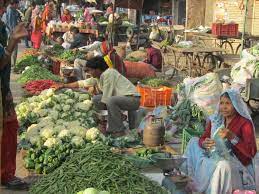
The Minister for Housing and Urban Affairs addressed the 6th meeting of National Association of Street Vendors of India (NASVI) with the theme as “From Encroachers to Self-Employed”.
- Street Vendor is a person who offers goods for sale to the public at large without having a permanent built-up structure from which to sell.
- Street vendors may be stationary in the sense that they occupy space on the pavements or other public/priv.ate spaces or, they may be mobile in the sense that move from place to place by carrying their wares on push carts or in baskets on their heads.
- There is a substantial increase in the number of street vendors in the major cities around the world, especially in the developing countries of Asia, Latin America and Africa.
- Around 49.48 lakh street vendors have been identified in India.
- Uttar Pradesh has the maximum at 8.49 lakh, followed by Madhya Pradesh at 7.04 lakh.
- Delhi has only 72,457 street vendors.
- No street vendor has been identified in Sikkim.
Swadesh Darshan Scheme 2.0:

Ministry of Tourism (MOT) revamps Swadesh Darshan Scheme
Key features of the revamped scheme:
- Develop sustainable and responsible tourism
- Development of benchmark and standards
- Promote domestic tourism mainly in tier-II and tier-III cities
- State government will designate implementing agencies for the projects (earlier ministry of tourism used to do that)
100% centrally funded
About Swadesh Darshan Scheme
- Tourism Ministry launched the Swadesh Darshan Scheme in 2014 to develop theme-based tourist circuits in the country using 100% central funds and CSR funding.
- Funding of individual projects will vary from state to state and will be finalised on the basis of detailed project reports prepared by PMC (Programme Management Consultant).
- India’s Tourism is ranked in 10th position (World Travel and Tourism Council’s report in 2019 in terms of contribution to GDP). It contributed 6.8% to India’s GDP and 8% of the total employment created.
- India has 40 sites listed under World Heritage List (32 cultural, 7 natural and 1 mixed site)
- India recently came up with Draft National Tourism Policyfocusing on Green, and digital tourism. Its main points were-
- Industry status of the tourism sector focus on green, digital, destination management, skilling and tourism-related support to MSMEs
Operation Hawk-Eye:
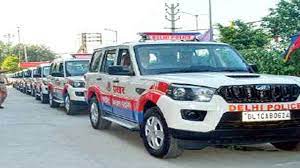
Delhi police project to curb street crimes, snatching and robbery by analyzing the behaviour, body type, clothing etc. of the perpetrators and using best practices.
- Spotters would be recruited and trained to identify snatchers and robbers.
- A person with an ‘ectomorph’ body type (tall and slim) and bikers riding either a dilapidated or high-end motorbike in a zig-zag manner with only the front rider wearing a helmet.
- Scorpian Squad: Dedicated interrogation team consisting of two to three personnel who keep track of the “latest mobile numbers used by criminals, their general activities and the whereabouts of those released on bail”.
Kargil Vijay Diwas:
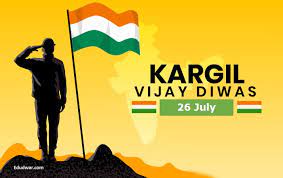
The 23rd anniversary of Kargil Vijay Diwas is being observed on the 26th of July 2022.
- The day is dedicated to the martyred soldiers of the Kargil war.
- After the Indo-Pak war of 1971, there had been many military conflicts.
- Both the countries conducted nuclear tests in 1998 which further escalated tensions and finally the Kargil War in 1999.
- Kargil War, also known as the Kargil conflict, was fought between May-July of 1999 in the Kargil (now a district in the UT of Ladakh) district of Jammu and Kashmir along the Line of Control (LoC) in which India got the victory.
Operation Vijay:
- In the year 1999, India and Pakistan signed the Lahore Agreement to mutually resolve the Kashmir issue in a peaceful manner.
- However, the Pakistani troops began infiltrating toward the Indian side of the Line of Control (LoC) under Operation Badr, hoping to cut off Indian Troops in Siachen.
- The Indian Army responded by launching Operation Vijay.
- On 3rd May 1999, Pakistan started this war when it had infiltrated into the high altitudes in the rocky mountainous region of Kargil with around 5,000 soldiers and captured it.
- When the Indian Government got the information about it, ‘Operation Vijay’ was launched by the Indian army to throw back the intruders who had treacherously occupied Indian Territory.
Monarch Butterflies:

Migratory monarch butterflies have been declared endangered in the International Union for Conservation of Nature (IUCN) Red List of threatened species.
- Monarch Butterfly :It’s a sub-species of the Danaus plexippus butterfly that travels around 4,000 kilometres across America.
- It’s the most recognizable butterfly species that are essential pollinators and further provides various ecosystem services such as maintaining the global food web.
- A smaller population of the species is also found in countries like Australia, Hawaii, and India.
- Issues:
- Their population in the continent has declined 23-72% over the last decade.
- The population of the eastern monarchs that migrate from the eastern United States and Canada — the bigger group — also shrunk by 84% from 1996-2014.
- They follow a unique lifestyle as they breed in only one particular plant The Milkweeds, but the removal of this plant by farmers led to their decrease in population.
- Further, farmers also widely use a weedicide for the removal of milkweeds.
- Weedicide are known as the weed killers or pesticides that are used to kill unwanted plants
- Legal and illegal logging and deforestation make space for agriculture and urban development, which causes habitat destruction.
- Frequent storms and droughts are more intense and disrupt flowering cycles, which led to the killing millions of butterflies.
Sakurajima Volcano Japan:
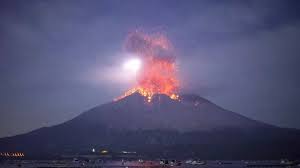
The Sakurajima Volcano erupted on Japan’s major western island of Kyushu.
- In 2021, the Fukutoku-Okanoba Submarine Volcano exploded in the Pacific Ocean, off Japan.
- Sakurajima is one of Japan’s most active volcanoes and eruptions of varying levels take place on a regular basis.
- It is an active stratovolcano.
- The largest historical eruptions of Sakurajima took place during 1471-76 and in 1914.
- Its eruption has been recorded since the 8th Century.
- Due to its frequent deposition of ash on Kagoshima, and due to its explosive potential, it is considered as one of the very dangerous volcanoes.
China-Pakistan Economic Corridor (CPEC):
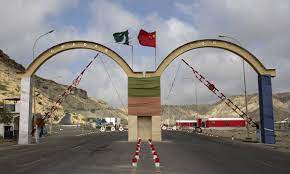
Pakistan and China decided to welcome any third country joining the multi-billion dollar China-Pakistan Economic Corridor (CPEC).
- In context to Afghanistan, it had broken new ground in strengthening international and regional connectivity.
- Earlier, Pakistan signed a new agreement with China to begin the second phase of the USD 60 billion China-Pakistan Economic Corridor (CPEC).
- CPEC is a 3,000-km long route of infrastructure projects connecting China’s northwest Xinjiang Uygur Autonomous Region and the Gwadar Port in the western province of Balochistan in Pakistan.
- It is a bilateral project between Pakistan and China, intended to promote connectivity across Pakistan with a network of highways, railways, and pipelines accompanied by energy, industrial, and other infrastructure development projects.
- It will pave the way for China to access the Middle East and Africa from Gwadar Port, enabling China to access the Indian Ocean and in return China will support development projects in Pakistan to overcome the latter’s energy crises and stabilising its faltering economy.
- CPEC is a part of the Belt and Road Initiative.
- The BRI, launched in 2013, aims to link Southeast Asia, Central Asia, the Gulf region, Africa and Europe with a network of land and sea routes.
One Belt One Road (OBOR):
- It is a multi-billion-dollar initiative launched in 2013.
- It aims to link Southeast Asia, Central Asia, the Gulf region, Africa and Europe with a network of land and sea routes.
- It has been launched to undertake big infrastructure projects in the world which in turn would also enhance the global influence of China.
Fresh Milk And Pasteurised Milk Exempted From Goods And Service Tax (GST):
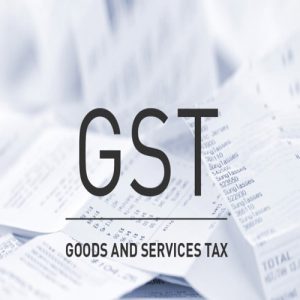
The Government of India clarified that fresh milk and pasteurised milk are fully exempted from Goods and Service Tax (GST).
- Further, milk products like curd, lassi, butter milk and paneer are also exempted from GST if sold in forms other than those pre-packaged and labelled.
- In a written reply in the Lok Sabha, Finance Minister Nirmala Sitharaman said a nominal GST of 5 per cent applies to curd, lassi, butter milk and paneer when sold in pre-packaged and labelled form, and Ultra High-Temperature Milk.
- Further, a GST of 12 per cent applies to condensed milk, butter, ghee and cheese. GST exemptions and rates apply uniformly across States.
- She said GST rates are prescribed on the recommendation of the GST Council, which is a constitutional body comprising of representatives from both Centre and the States and Union Territories.
Human-Animal Conflict:
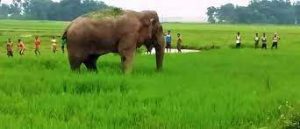
Minister of Environment tabled data in Lok Sabha on human-animal conflict.
- Between 2018-19 and 2020-21, 222 elephants were killed by electrocution across the country, 45 by trains, 29 by poachers and 11 by poisoning.
- Among tigers, too, 29 were killed by poaching between 2019 and 2021, while 197 tiger deaths are under scrutiny.
- Among human casualties of conflict with animals, elephants killed 1,579 humans in three years — 585 in 2019-20, 461 in 2020-21, and 533 in 2021-22. Odisha accounted for the highest number of these deaths at 322.
- Tigers killed 125 humans in reserves between 2019 and 2021. Maharashtra accounted for nearly half these deaths, at 61.
- Human-wildlife conflict refers to the interaction between wild animals and people and the resultant negative impact on people or their resources or wild animals or their habitat.
- It occurs when growing human/animal populations overlap with established wildlife/human territory, creating a reduction of resources or life for some people and/or wild animals.
- Main causes of human-wildlife conflict include habitat loss, growth of the population of wild animals, changing cropping patterns that attract wild animals to farmlands, movement of wild animals from forests area to human-dominated landscapes for food and fodder, movement of human beings to forests for illegal collection of forest produce, habitat degradation due to the growth of invasive alien species, etc.
N-Treat Technology:

IIT-Bombay to help treat Mumbai’s sewage with new technology.
- N-Treat is a seven-stage process for waste treatment that uses screens, gates, silt traps, curtains of coconut fibres for filtration, and disinfection using sodium hypochlorite.
- The first stage involves screening to prevent the entry of floating objects such as plastic cups, paper dishes, polythene bags, sanitary napkins, or wood.
- The second stage has proposed the construction of a silt trap, which creates an inclination and ‘parking spot’ on the bed of the nullah for sedimentation.
- The next three stages are the installation of ‘bio zones’ in the form of coconut fibre curtains that will act as filters and promote the growth of biofilm to help in the decomposition of organic matter.
- The final stage for sewage treatment will include disinfection using sodium hypochlorite, to kill the bacteria in the water.
Snow Leopard:
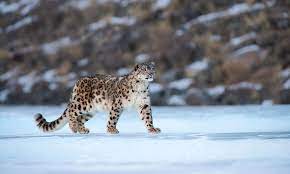
As per the study by the Zoological Survey of India, the Snow leopard regulates the population of its herbivores prey species (Siberian ibex and blue sheep)
- Snow leopard detection probability was high if the site was used by its prey species.
- Indicator species and flagship species: Snow leopards act as an indicator of the health of the mountain ecosystem in which they live, due to their position as the top predator in the food web.
- Threats: loss of natural prey species, retaliatory killing due to conflict with humans and illegal trade of its fur and bones.
- Habitat: Snow leopards use rugged mountainous areas or non-forested areas covering an altitude between 3200m-5200m
habitat covariates, such as barren area, grassland, aspect, slope and distance to water were important drivers of habitat use for the snow leopard as well as its prey species.
Conservation Effort:
- Global Snow Leopard and Ecosystem Protection (GSLEP) Programme (2013),
- HimalSanrakshak (community volunteer programme, 2020),
- SECURE Himalaya (GEF and UNDP funded programme),
- Project Snow Leopard (2009),
- 21 critically endangered species for the recovery programme (MoEFCC),
- Snow Leopard conservation breeding programme (at Padmaja Naidu Himalayan Zoological Park, Darjeeling)




